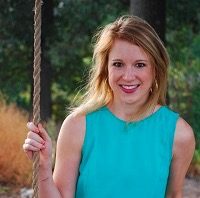
I stand in my walk-in closet and stare at my white Stan Smiths and my new black leather boots. I’m wearing skinny jeans and a sweater, but the shoes will make the difference.
The shoes will introduce me to the new group I’m about to meet—right now, just an imagined sea of blurred faces that gives me butterflies in my stomach.
I know, of course, that no one in this group will really give a damn what shoes I wear. In a group where the one membership requirement consists of losing a loved one to suicide, nobody cares about shoes.
I’m dressing for myself—to try and assign an identity to this new person I’ve become. Well, become remains to be seen. I’m still assembling all the pieces of me that broke apart last fall when my little sister killed herself, seemingly out of the blue.
On the subway ride to the suicide survivors support group meeting, I eye the people on the 1 train. Are they heading to where I’m heading? Are they broken, like me? I yearn to be able to look at a stranger and know that they’re broken too. To know that they’ve been through pain so intense they thought they might die, and then felt both disdain and reverence for their bodies when they didn’t. Where are you, broken people? I need you. Let’s band together, a tribe of involuntary warriors.
At the meeting, I hang up my coat and fill out some first-time attendee forms. On a table sits a small paper plate of Mini Oreos and another plate of cough drops. The absurdity of these second-thought snacks makes me want to laugh and cry at the same time. There are paper cups, but no coffee or water to be seen. One of the participants is eating Häagen-Dazs ice cream straight from the pint, and he quickly becomes my favorite person at the meeting.
We start the meeting by going around the circle and sharing our name and the person we lost. Another step into solidifying the reality. My voice shakes as I say, “My name is Mary. I lost my little sister, Laura, on October 30, 2016.” The tears come hard and fast, and someone hands me Kleenex.
There we sit, a room full of people broken by suicide. Our hearts broken, our futures broken, and our trust most certainly broken. But here’s the funny thing I’ve learned about being broken. The world doesn’t abandon you. You think you would be discarded, pushed aside for the pursuit of perfection, but this world doesn’t foster perfection. It fosters chaos and confusion and progress and growth. It asks us to be vulnerable.
There is an old Japanese art where broken pottery is repaired by filling up the cracks with gold. This art form does not hide the brokenness of the pottery; instead, it celebrates it. The breaks become a part of the object’s history and uniqueness, and make the piece even stronger than before. Some collectors will even smash valuable pieces of pottery just so they could put them back together with gold. They understand that brokenness is an opportunity to become more beautiful.
Everyone in this group is broken, but we are also more honest and more open because of our cracks. A few people come up to me after the meeting. A man commends me for starting the healing process. A women tells me my sister is an angel in heaven, and I try not to make a face. I’m raw and shaken, but also lighter. I’m ready for the gold to start filling me in.
I leave the meeting and walk outside into the night, my black leather boots stepping firmly on the dirty New York sidewalk.
~
~
~
Author: Mary Conroy Almada
Image: Author’s Own
Editor: Travis May






Read 1 comment and reply